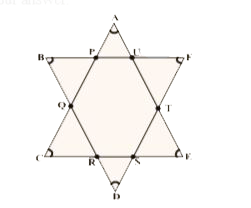The diameter of a spherical balloon increases from 14cm . To 28 cm . As air is being pumped into it. Find the ratio of surface area to inner surface area of the balloons in the two cases. Solution in Tamil
The correct Answer is:1:4
Step by step video, text & image solution for The diameter of a spherical balloon increases from 14cm . To 28 cm . As air is being pumped into it. Find the ratio of surface area to inner surface area of the balloons in the two cases. by Maths experts to help you in doubts & scoring excellent marks in Class 9 exams.
Topper's Solved these Questions
- BOOK - NCERT TAMILCHAPTER - SURFACE AREAS AND VOLUMES EXERCISE - EXERCISE 10.312videos
SURFACE AREAS AND VOLUMES
- BOOK - NCERT TAMILCHAPTER - STATISTICSEXERCISE - THINK AND DISCUSS2videos
STATISTICS
- BOOK - NCERT TAMILCHAPTER - THE ELEMENTS OF GEOMETRY EXERCISE - BRAIN TEASER2videos
THE ELEMENTS OF GEOMETRY
Similar Questions
The base area of a cone is 38.5cm2 .Its volume is 77cm3 Find its height .
01:22View SolutionClassify your class mates according to their heights and find the mode of it.
02:50View SolutionWhat is the measure of ∠A+∠B+∠C+∠D+∠E+∠F in the figure given below. Give reason to your answer.
 01:40View Solution
01:40View SolutionThe radius of a spherical balloon increases from 7 cm to 14 cm as air is being pumped into it. Find the ratio of surface areas of the balloon in the two cases.
View SolutionThe radius of a spherical balloon increases from 7cm to 14cm as air is being pumped into it.Find the ratio of surface areas of the original balloon to the resulting new balloon.
04:28View SolutionThe radius of a spherical balloon increases from 7 cm to 14 cm as air is being pumped into it. Find the ratio of surface areas of the balloon in the two cases.
View SolutionThe diameter of a spherical balloon increases from 14cm . To 28 cm . As air is being pumped into it. Find the ratio of surface area to inner surface area of the balloons in the two cases.
View SolutionThe diameter of a spherical balloon increases from 14cm . To 28 cm . As air is being pumped into it. Find the ratio of surface area to inner surface area of the balloons in the two cases.
03:44View SolutionThe diameter of a spherical balloon increases from 14cm . To 28 cm . As air is being pumped into it. Find the ratio of surface area to inner surface area of the balloons in the two cases.
02:16View SolutionThe diameter of a spherical balloon increases from 14cm . To 28 cm . As air is being pumped into it. Find the ratio of surface area to inner surface area of the balloons in the two cases.
01:22View SolutionThe radius of a spherical balloon increases from 7 cm to 14 cm as air is being pumped into it. Find the ratio of surface areas of the balloon in the two cases.
01:40View SolutionThe radius of a spherical balloon increases from 7cm to 14cm as air is being pumped into it. Find the ratio of surface areas of the original balloon to the resulting new balloon.
02:32View SolutionThe radius of a spherical balloon increases from 7 cm to 14 cm as air is being pumped into it. Find the ratio of surface areas of the balloon in the two cases.
02:23View SolutionThe radius of a spherical balloon increases from 7 cm to 14 cm as air is being pumped into it. Find the ratio of surface areas of the balloon in the two cases.
02:01View SolutionThe radius of a spherical balloon increases from 14 cm to 35 cm as air is pumped into it. Find the ratio of surface areas of the balloon in these two cases.
02:57View Solution
